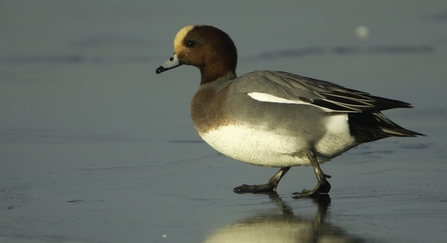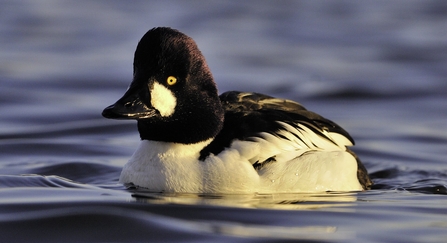
Wigeon (Danny Green/2020VISION)
The first group are easy to see. Open water such as the meres around Ellesmere, Charles Sinker Fields at Whixall, Chelmarsh reservoir, Polemere reservoir, Priorslee, Venus Pool and Chetwynd Pool are all good places to try, taking binoculars and a telescope if you have one. Large flocks of wigeon congregate where shallow water and wet grassland offer enough aquatic plants, grasses and roots to feed them, the males showing off their handsome chestnut, pink, grey and white plumage highlighted with a yellow forehead. Their attractive whistling call is a real sound of winter for me.



